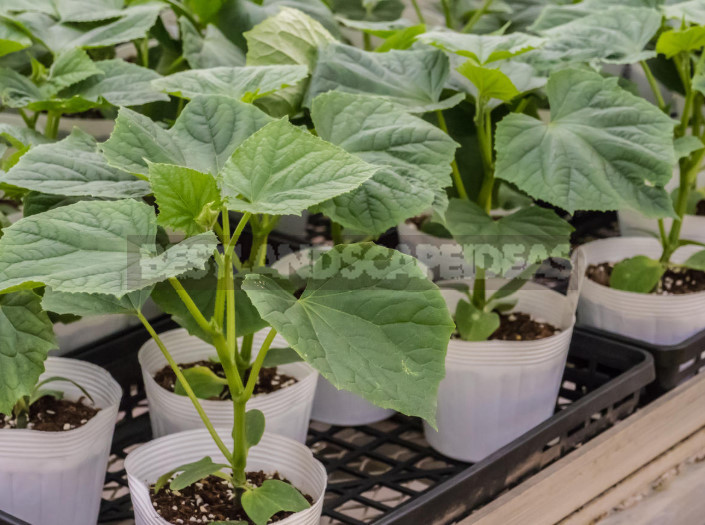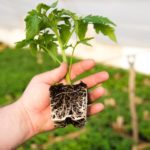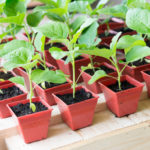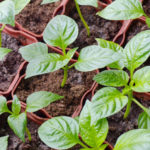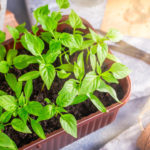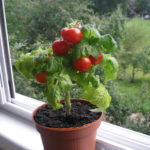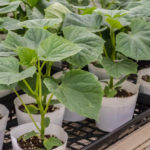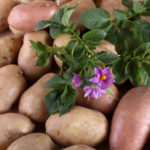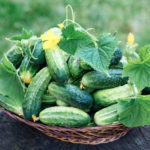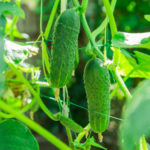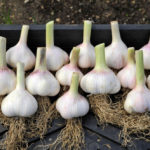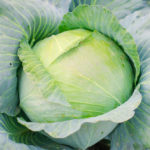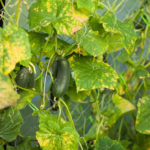Every summer resident wants fresh vegetables to appear on the table as soon as possible, and fragrant crispy cucumbers become especially attractive. To get an early harvest of cucumbers, many grow them through seedlings.
However, novice gardeners often face difficulties in this matter and instead of strong seedlings receive painful income, which refuse to bear fruit. Let’s look at the preferences of this culture and find out how to grow excellent seedlings of cucumbers.
Landing dates
The key to obtaining a good seedling of cucumbers are properly calculated terms of planting seeds. Calculate their is not difficult. To do this, you need to start from the age of the seedlings, ready to move to the bed – it’s 25-30 days. To them we add another 3-6 days, which will take to germinate the seeds (this interval depends on whether you will subject the seeds to pre-sowing treatment or plant them dry).
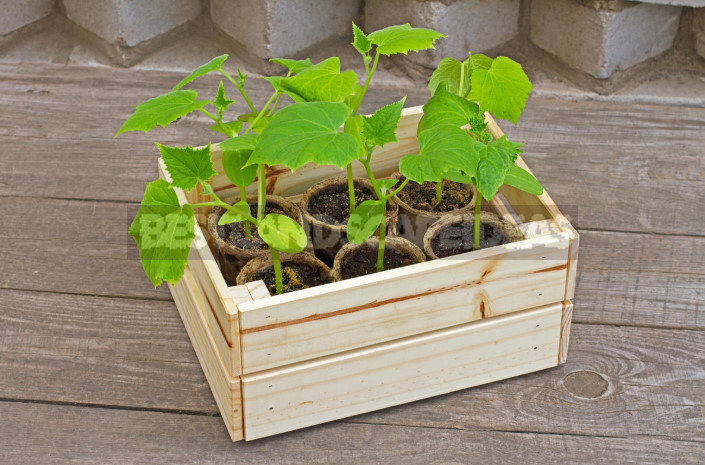
After that, it is necessary to refresh the memory of the spring weather conditions in your region over the past few years and decide when you can transplant seedlings into the open ground or greenhouse.
It is worth remembering that this thermophilic culture will not tolerate return frosts (in the open ground), will stop growing at a temperature below +15°C, and the thermometer with marks below +10°C, which are observed for more than 2-3 days, will start irreversible processes in plant tissues. Therefore, it is necessary to plant seedlings on the bed only with the arrival of sustainable warming, when the air temperature in the daytime will be at least +18…+20°C.
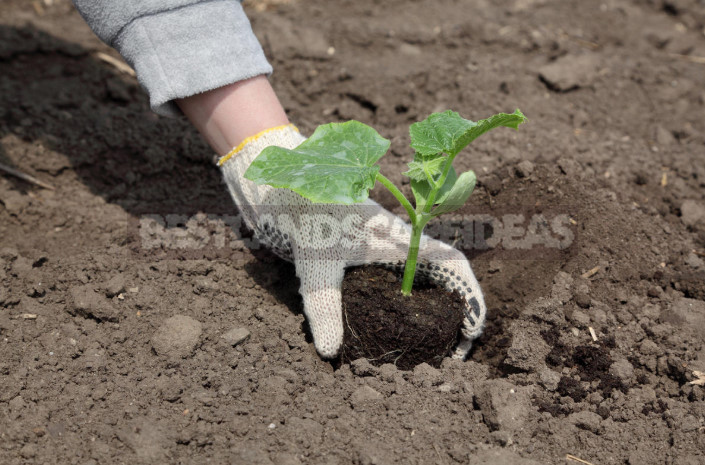
From the expected date of planting of seedlings, we count in the opposite direction the 4-5 weeks that you will spend on growing cucumber seedlings, and we get the term of sowing seeds for seedlings.
For example, summer residents who grow cucumbers in the open ground, cool weather conditions allow them to plant seedlings in the garden in the middle or end of may, so they start sowing seeds in the second or third decades of April. Owners of unheated greenhouses will be able to please themselves with an earlier harvest of fragrant cucumbers – they plant seeds for seedlings in late March or early April, and grown seedlings are moved to a greenhouse bed in late April or early may.
Seed selection
To achieve good fruiting from parthenocarpic and self-pollinated varieties and hybrids are much easier since the phenomenon of the empty shell, they are extremely rare (only in case of serious failure in the microclimate or food). But bee pollinated varieties that form bisexual inflorescences often suffer from this “disease”.
But bee pollinated cucumbers have one secret: their yield depends on the age of the seeds that were used for planting. These cucumbers when grown from freshly picked (last year’s) seed shape little prolific bushes with a large number of male inflorescences, referred to as the shell.
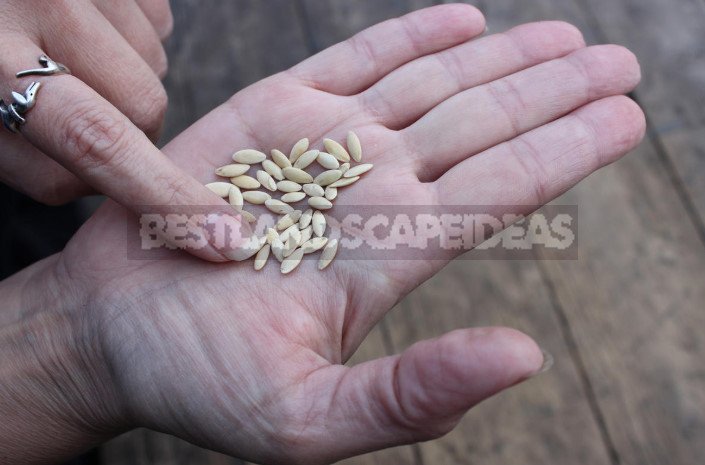
When planting two-year seeds, the yield of such plants will be much higher. Ideal for planting – 3-4-year-old seeds. But after 6 years of storage, the germination of cucumber seeds begins to decline, and by the year 9 they become unfit for planting. Therefore, be sure to pay attention to the date of packaging of seeds of bee pollinated varieties. Fresh seed is better to put in the bins and use for planting in 1-2 years.
Artificially “grow old” fresh seeds of bee pollinated varieties and increase the number of female inflorescences responsible for the appearance of the ovary on future bushes, you can use a simple technique. To do this, 1.5-2 months before planting, they need to be wrapped in a cloth bag and hung from the battery, where the temperature will be kept at +28…+30°C.
Selection of containers for planting
By the time the seeds are planted, you should have a suitable container ready. Since this culture is very painful to tolerate damage to the root system, it is better to immediately plant in separate containers, bypassing the process of picking. To do this, suitable peat pots or plastic cups.
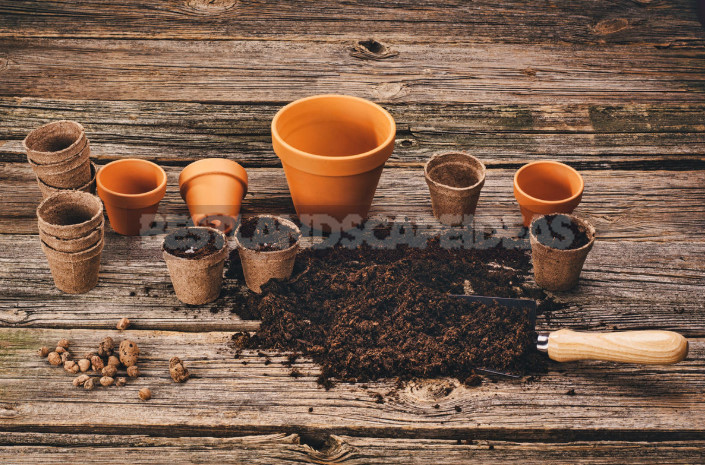
You can sow the seeds first in a compact seedling cassettes. But it is important to remember that as the seedlings grow, they will have to expand the space between them so that they do not touch each other with leaves. Therefore, with this approach, a couple of weeks after planting, you will need to pass the plants from the cassette cells into separate glasses and place them on the windowsill with the optimal interval.

Preparation of soil mixtures
When grown cucumber seedlings of the importance of the correct soil. It should be light, loose, air-and water-permeable (but moisture-intensive) and contain sufficient nutrients.
This substrate can be purchased at the horticultural store. At the same time, preference should be given not to universal soil mixtures, but to soil specially designed for growing cucumber seedlings.
Frugal gardeners can cook nutritious potting mix alone. To do this, mix in a ratio of 1:2:1:1 turf from deciduous forest, well-ripened humus, peat and coarse sand. On a bucket of such a mixture, add a glass of sifted wood ash, 3 tablespoons of double superphosphate and 1.5-2 tablespoons of potassium sulfate.

Purchase substrate the trusted manufacturer does not need disinfecting, but your homemade potting mix will require mandatory training before use. To do this, the soil harvested from autumn can be left for the winter on the street for freezing or shortly before planting seedlings shed with a disinfecting solution.
Seed treatment before planting
If you purchased cucumber seeds covered with a “mix” of fertilizers and stimulants, feel free to plant them on seedlings dry – this seed does not require additional treatments. But over conventional seeds, it is necessary to intercede.
First of all, they need to be disinfected and released from the pathogenic microflora (and personally collected seeds are additionally calibrated by selecting full-fledged specimens). To do this, the seeds are placed for 20-30 minutes in a strong solution of potassium permanganate, and then washed under running water. An alternative may be heated to +40…+45°C 3% solution of hydrogen peroxide, in which the seeds are kept for 10-15 minutes, or a solution of any fungicide prepared according to the instructions.
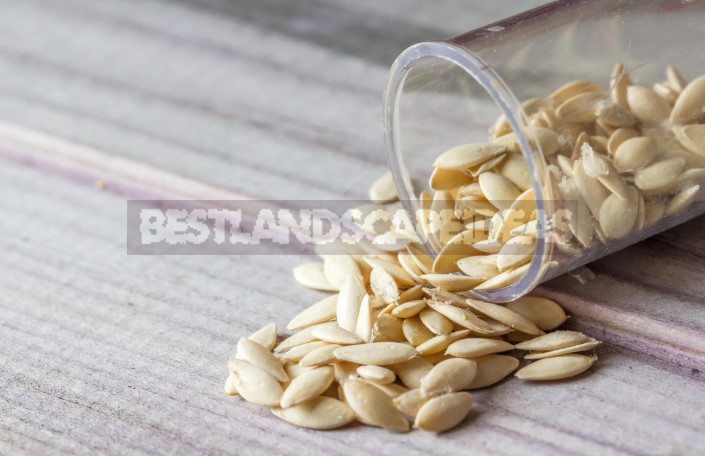
After disinfection, the seeds can be slightly dried and planted in prepared containers. But if you want to speed up this process and increase the energy of shoots, it makes sense to wet the seed in a nutrient solution. For its preparation it is better to use a complex organo-mineral preparation enriched with trace elements. In such a solution, you need to moisten a piece of cotton cloth or gauze, wrap the seeds in it and leave them for a day in a warm place at a temperature of +26…28°C.
